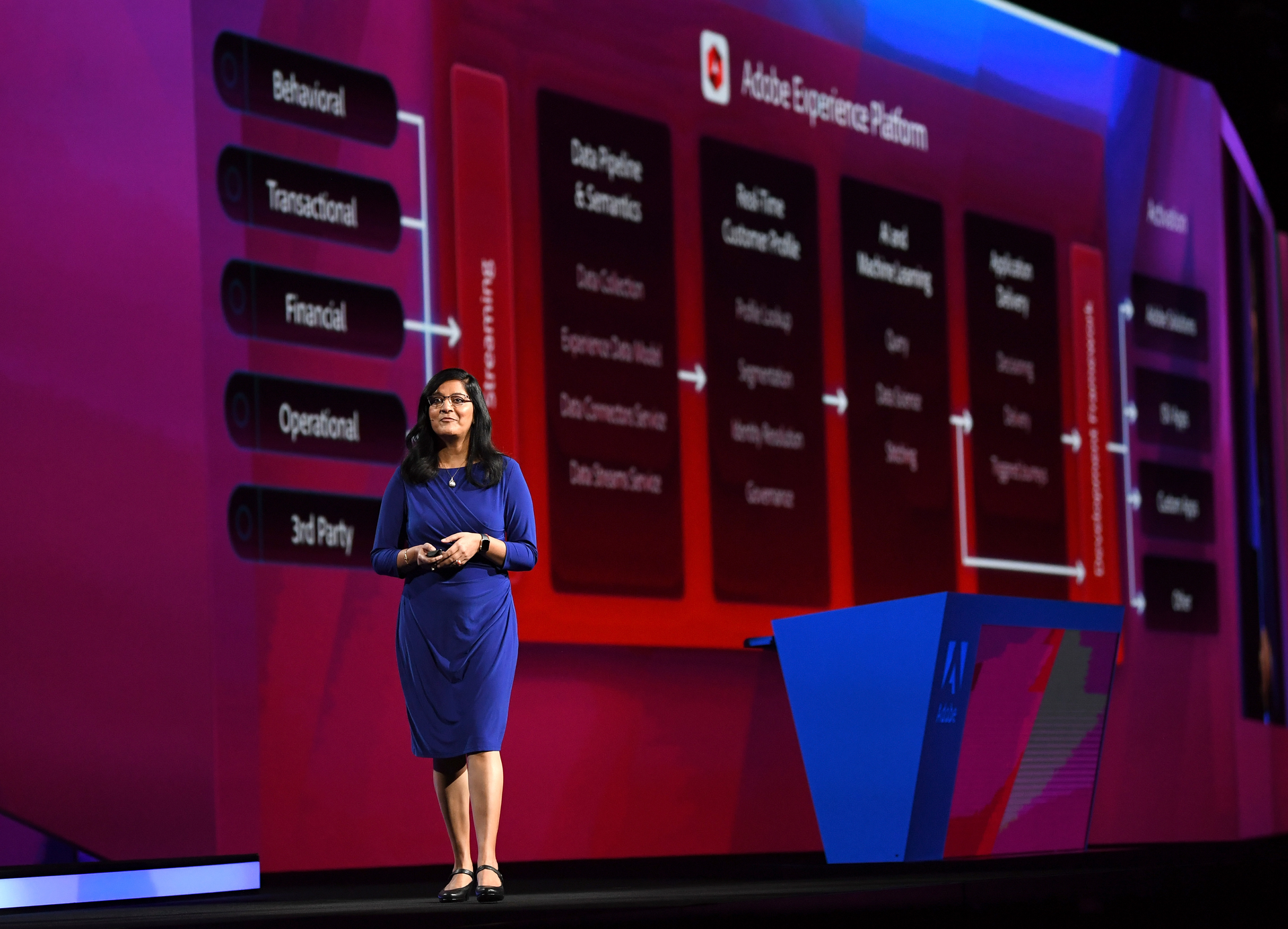“We need to know our customers, know their preferences, and understand them at a holistic level,” said Anjul Bhambri, Adobe VP for platform engineering, announcing the general availability of the Adobe Experience Platform.
She described it as a new architecture for the Experience Cloud, and slides showed it as a layer supporting the four sub-clouds (Marketing, Analytics, Advertising, and Commerce), with the AI engine Sensei sandwiched between. Bhambri, with 14 years at IBM behind her, has been working with big, unstructured data from at least Hadoop onwards, and understands the challenge of maintaining real-time customer profiles, fed by the gushing hose of trillions of data points, across the entire Adobe eco-system.
In fact, the challenge sounds familiar. It’s exactly the challenge — or opportunity — described by Oracle executives at last week’s Modern Customer Experience conference. At least, that’s how it sounds to these ears. At best, the big players in the customer experience space are facing up to the fact that seamless journeys can’t be delivered unless there is one, and just one, up-to-date customer profile. At worst, it sometimes seems they are trying to trump the entrants in the Customer Data Platform game.
That’s not necessarily the case. As we’ll be reporting later this week, the buzzing talk around CDPs may not yet be fully supported by a burgeoning category of authentic solutions. Indeed,CTO Abhay Parasnis, in his keynote, disparaged existing CDPs as “no more than data aggregators,” and “limited.” But whereas Oracle debated whether to call CX Unity a CDP, and opted instead for “customer intelligence” as the label, Adobe are less hesitant about applying the term to Adobe Experience Platform, describing it as a “real-time CDP.”
Built on Microsoft Azure, the Platform is said to be the key to customer experience management, and the first real-time instance of such a solution. It’s already in use among some of Adobe’s premium customers (Best Buy, The Home Depot, Verizon Wireless and Sony Interactive Entertainment, for example). Interestingly, the architecture calls for the flood of data points (tens of millions per second) to be pushed through an Experience Data Model sieve, which applies a standardized CX model and data vocabulary to the flow. Sensei connects the resulting information with content, seizing the opportunity to serve the right message in the right channel within the moment.
That’s the promise, at least, and it will be interesting to see how these solutions work out in practice (Salesforce is on the same track).
I asked Adobe whether there was a clear differentiation between the Experience Platform and Oracle’s CX Unity, but the response didn’t address that question directly. I was told:
“Adobe Experience Platform powers Adobe’s real-time CDP, which brings together known and unknown data to activate real-time customer profiles across channels throughout the customer journey. Brands can rationalize these profiles and apply Adobe Sensei for continuous intelligence to transform these data segments into valuable audiences. Adobe views its Real-Time CDP as a powerful use case of its platform — within the much bigger set of enterprise challenges Adobe Experience Platform is solving: Stitching together siloed data from across the enterprise and enabling real-time actionability of the data through AI and ML. Adobe’s platform is open and extensible with APIs and an extensive partner ecosystem, so data and applications can really come from anywhere.”
At least we can put down a marker. A year from now, which of these bold initiatives will be seen to be delivering on their bold promises?
Adobe covered DMN’s expenses to attend Summit.








